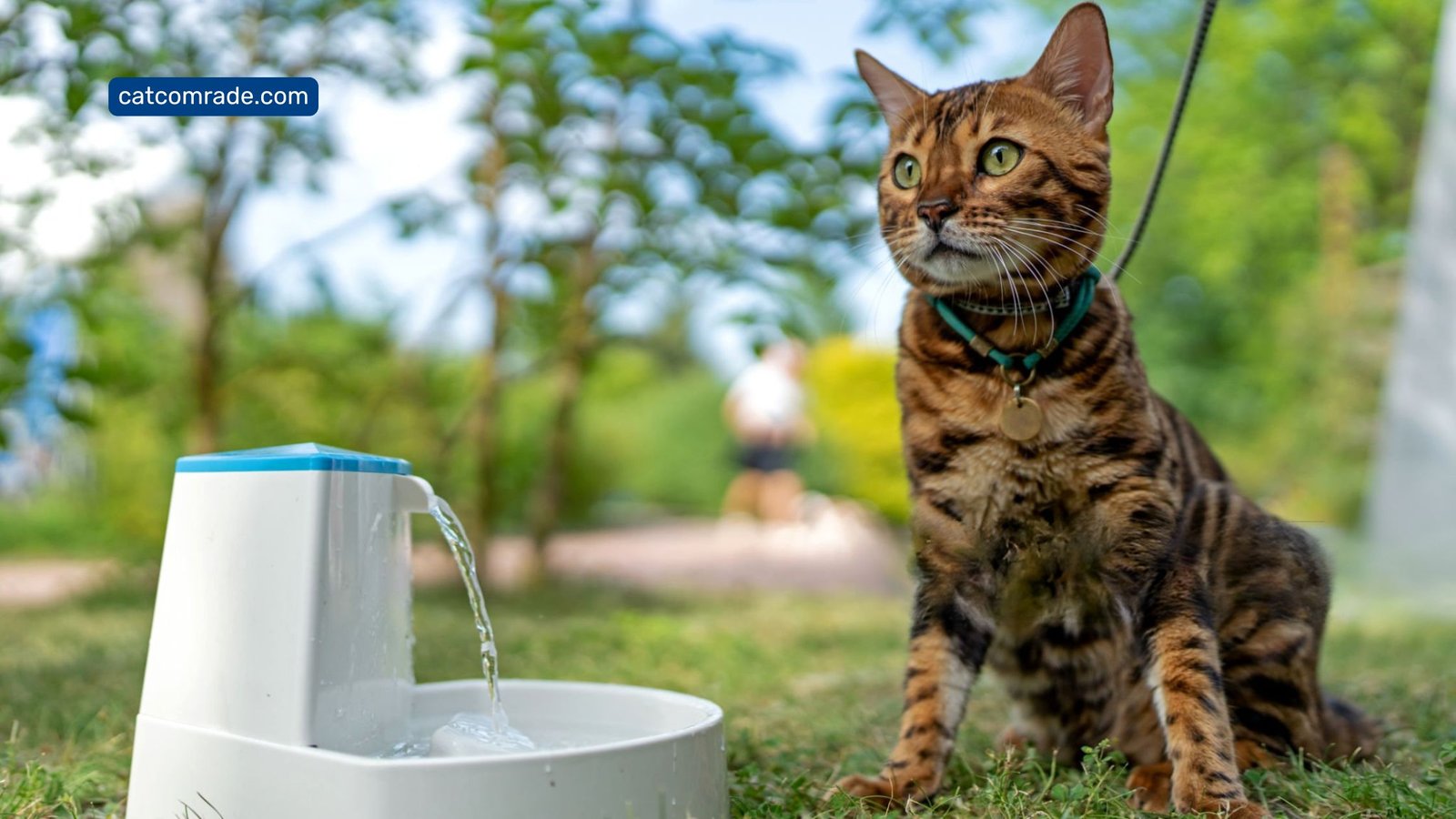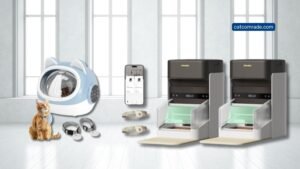Cat Won’T Eat from Automatic Feeder: Easy Fixes to Try Now

Is your cat refusing to eat from the automatic feeder you bought? It can be frustrating and worrying when your furry friend ignores their food.
You want to make sure your cat is healthy and happy, but this problem might be standing in your way. Understanding why your cat won’t eat from the feeder and how to fix it can save you time and stress.
Keep reading to discover simple tips that can help your cat enjoy mealtime again.

Credit: www.reddit.com
Reasons Cats Avoid Automatic Feeders
Cats may avoid automatic feeders for many reasons. Understanding these helps solve feeding problems. Cats have habits and preferences that machines might not match. Some feeders confuse or scare them.
Others offer food cats don’t like. Health issues also change their appetite. Knowing these causes makes feeding easier.
Unfamiliarity With The Device
Cats like what they know. New machines can seem strange or scary. They may avoid feeders that move or beep. Some cats need time to get used to new devices.
Slowly introducing the feeder helps. Let the cat see and smell it first. Patience can help cats accept the feeder.
Noise And Movement Issues
Automatic feeders often make noise when working. Some cats dislike loud clicks or whirs. Sudden movements can startle shy cats.
Quiet and slow feeders work better. Placing the feeder in a calm spot helps too. Cats prefer a peaceful eating area.
Food Preferences And Freshness
Cats can be picky eaters. They may reject food left too long in feeders. Freshness matters to cats. Some feeders release food in small amounts to keep it fresh.
Using favorite food types improves acceptance. Watch what your cat likes and adjust the feeder content.
Health Concerns Affecting Appetite
Illness can reduce a cat’s hunger. Pain, dental problems, or upset stomach lower food interest.
A cat not eating from the feeder might be sick. Check for other signs of health issues. Visit the vet if appetite changes last more than a day.
Checking The Feeder Setup
Checking the feeder setup is important when your cat won’t eat from the automatic feeder. Small issues with the setup can stop your cat from using it.
This section helps you find and fix those problems. A few simple checks can make your cat eat happily again.
Proper Placement And Accessibility
Place the feeder in a quiet, calm spot. Avoid noisy or busy areas that scare your cat. Make sure your cat can reach the feeder easily. It should not be too high or blocked by furniture. Cats prefer a safe and comfortable place to eat.
Cleaning And Maintenance Tips
Clean the feeder regularly to keep it fresh. Old food or dirt can cause bad smells. This may make your cat avoid the feeder. Wash bowls and trays with warm, soapy water.
Dry them well before refilling. Check for broken parts that stop food from coming out.
Ensuring Correct Portion Sizes
Set the feeder to give the right amount of food. Too much food can spoil or overwhelm your cat. Too little food can make your cat stay hungry.
Follow feeding guidelines on the cat food package. Adjust portions based on your cat’s size and activity. Proper portions help your cat trust and use the feeder.
Encouraging Your Cat To Use The Feeder
Encouraging your cat to use an automatic feeder takes time and patience. Cats may feel unsure about new devices. Helping them adjust gently improves their comfort and trust.
The right steps can make the feeder a positive experience. Start slow, use rewards, and keep a steady routine.
Introducing The Feeder Gradually
Place the feeder near your cat’s usual eating spot. Let your cat explore it without food first. Allow sniffing and touching to build curiosity. Turn the feeder on briefly to show it works. Add small amounts of food at first. Increase the food little by little over days.
Using Treats And Positive Reinforcement
Offer treats near the feeder to attract your cat. Praise your cat softly when it approaches the feeder. Use a calm voice to encourage eating.
Give a small treat after your cat eats from the feeder. This helps your cat link the feeder with good things. Avoid forcing your cat to eat from it.
Maintaining A Feeding Schedule
Feed your cat at the same times each day. Consistent timing helps your cat expect the feeder. Remove leftover food to keep the feeder clean.
Regular feeding builds trust in the feeder’s routine. Watch your cat’s response and adjust the schedule if needed.

Credit: www.reddit.com
Alternative Feeding Solutions
Sometimes cats refuse to eat from automatic feeders. This can be frustrating for owners. Alternative feeding solutions help solve this problem.
They offer different ways to feed your cat comfortably. These options can make mealtime easier and more enjoyable for your pet.
Manual Feeding Options
Try feeding your cat by hand. It creates a bond and encourages eating. Use small amounts of food at a time. This keeps the food fresh and inviting. You can also place the food in a bowl nearby. Sit quietly and let your cat eat at its own pace.
Using Different Types Of Feeders
Some cats prefer specific feeder styles. Try a slow feeder bowl to slow down eating. Puzzle feeders add fun and challenge. Elevated feeders can help cats with neck or joint pain. Experiment with various feeders to find what your cat likes best.
Consulting A Veterinarian
Refusal to eat may signal health issues. A veterinarian can check your cat’s health. They can suggest special diets or treatments. Talk about your cat’s eating habits and feeder problems. Follow the vet’s advice for the best results.
Frequently Asked Questions
Why Won’t My Cat Eat From The Automatic Feeder?
Cats may avoid automatic feeders due to unfamiliarity or discomfort. The feeder’s noise or smell can deter them. Gradually introducing the feeder and using familiar food can help your cat adjust.
How Can I Encourage My Cat To Use The Feeder?
Try placing the feeder near your cat’s usual eating spot. Use their favorite food initially. Reward your cat with treats or praise when they approach or eat from the feeder.
Could Feeder Settings Affect My Cat’s Eating Habits?
Yes, incorrect portion size or feeding times may confuse your cat. Adjust settings to match your cat’s routine and appetite for better acceptance.
Is The Feeder Type Important For Picky Cats?
Absolutely. Some cats prefer slow feeders or models that mimic natural hunting. Choose feeders with quiet operation and easy access to suit your cat’s preferences.
Conclusion
Cats can be picky about new feeding methods. Patience helps them adjust to automatic feeders. Try small changes to attract their interest.
Keep the feeder clean and the food fresh. Watch your cat’s behavior to understand preferences. Sometimes, a slow transition works best.
Your cat’s comfort matters most in feeding. Stay calm and consistent while trying new steps. Soon, your cat may enjoy eating from the feeder. Trust the process and observe your pet closely.






